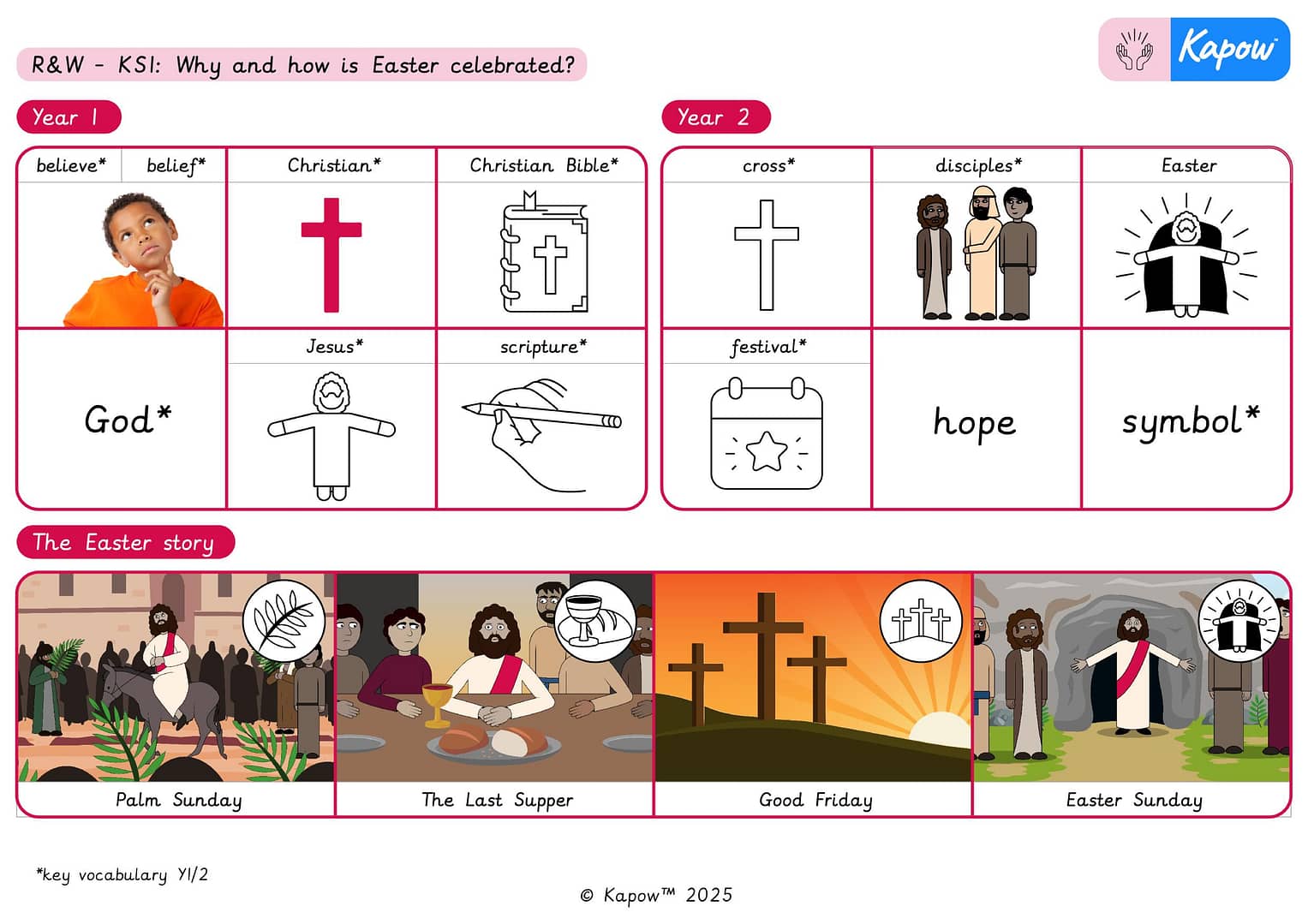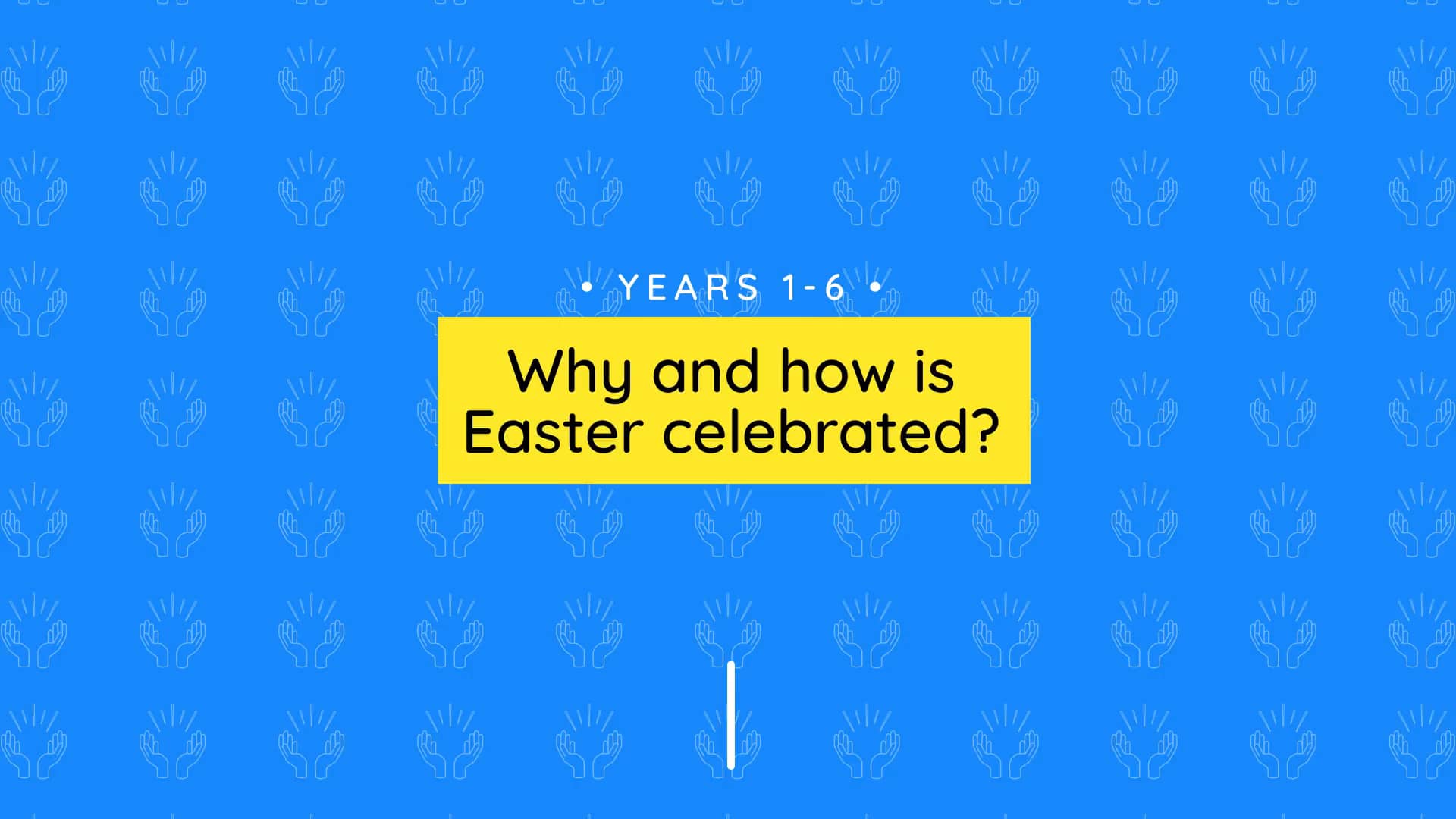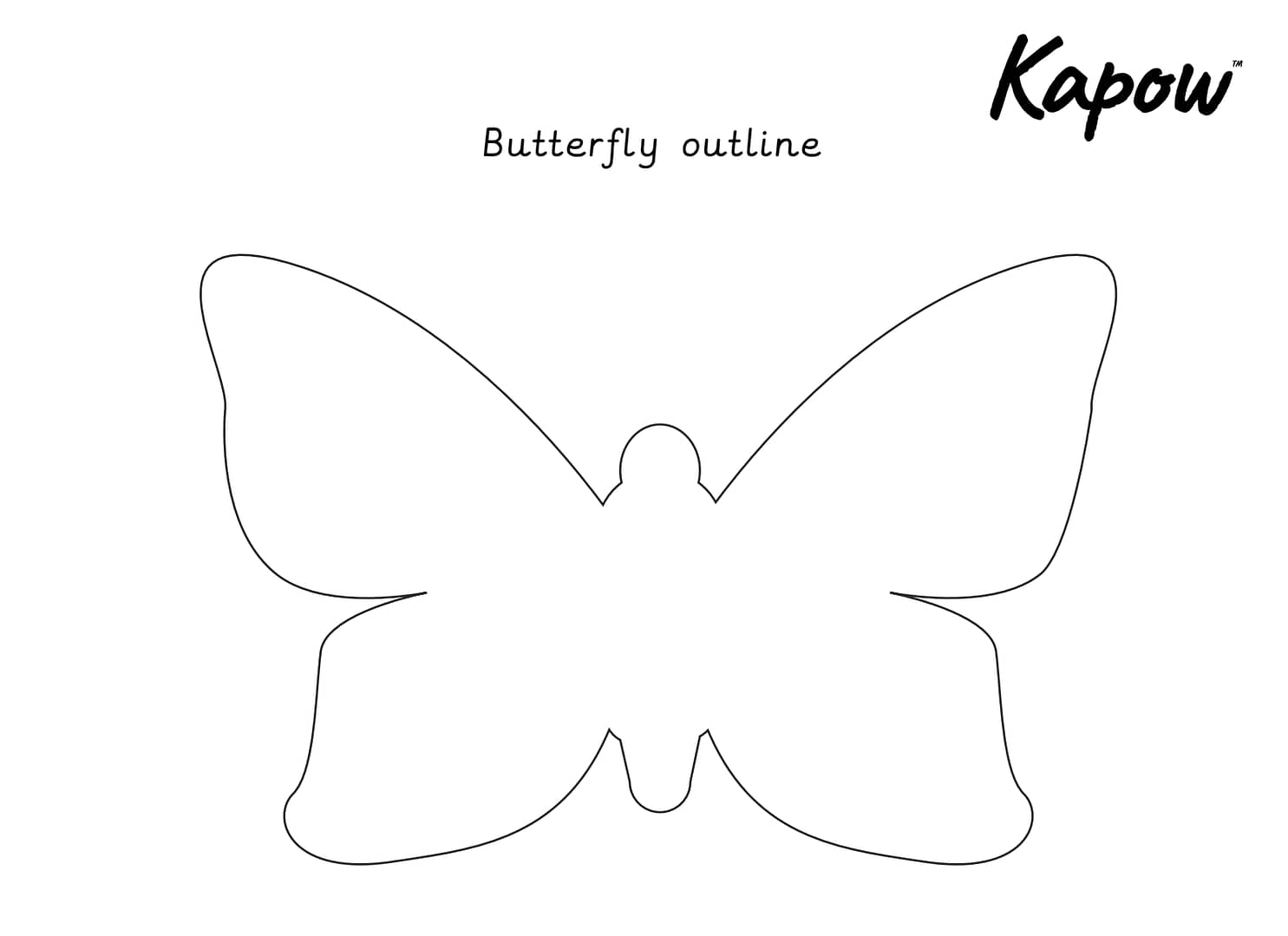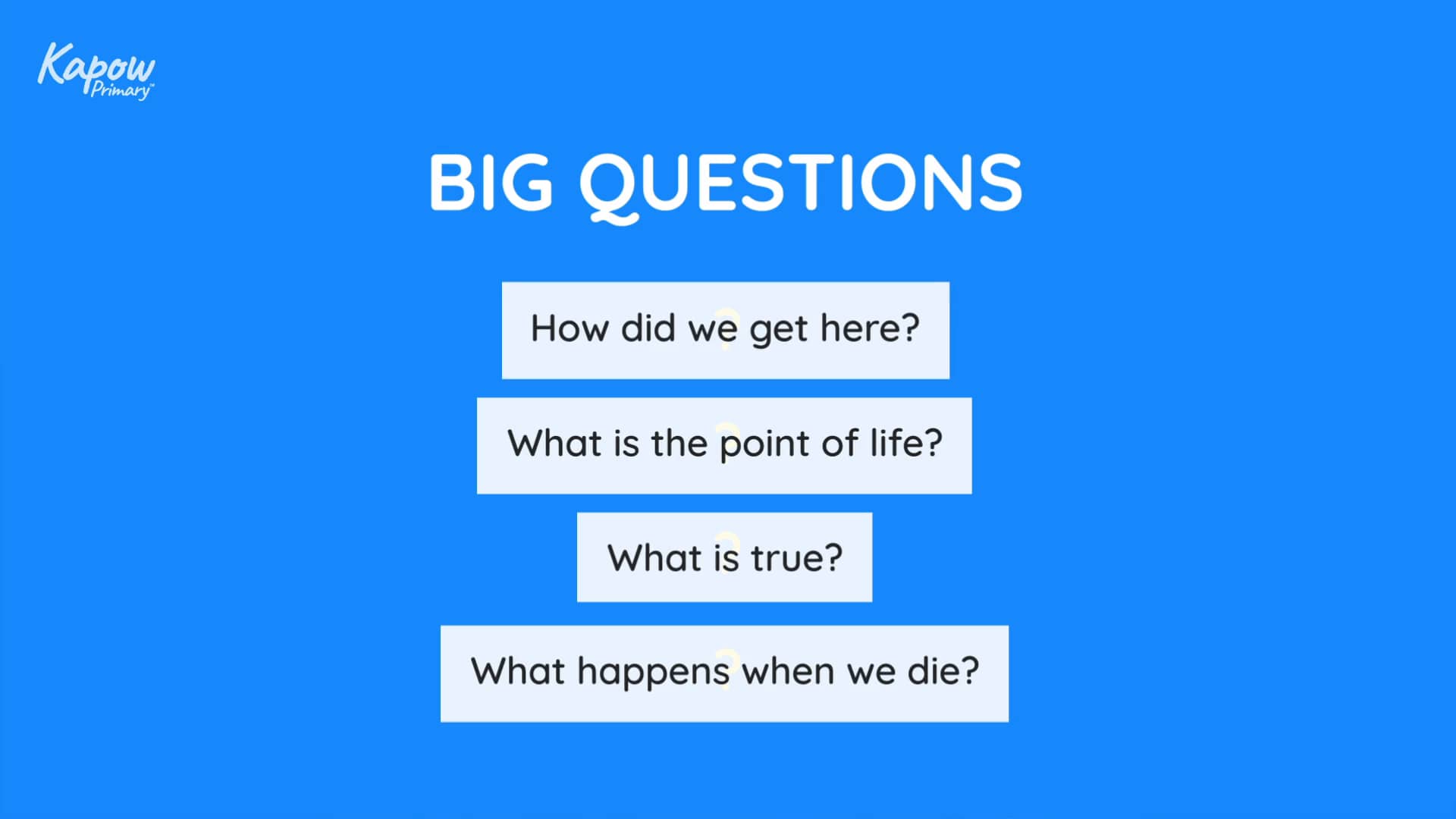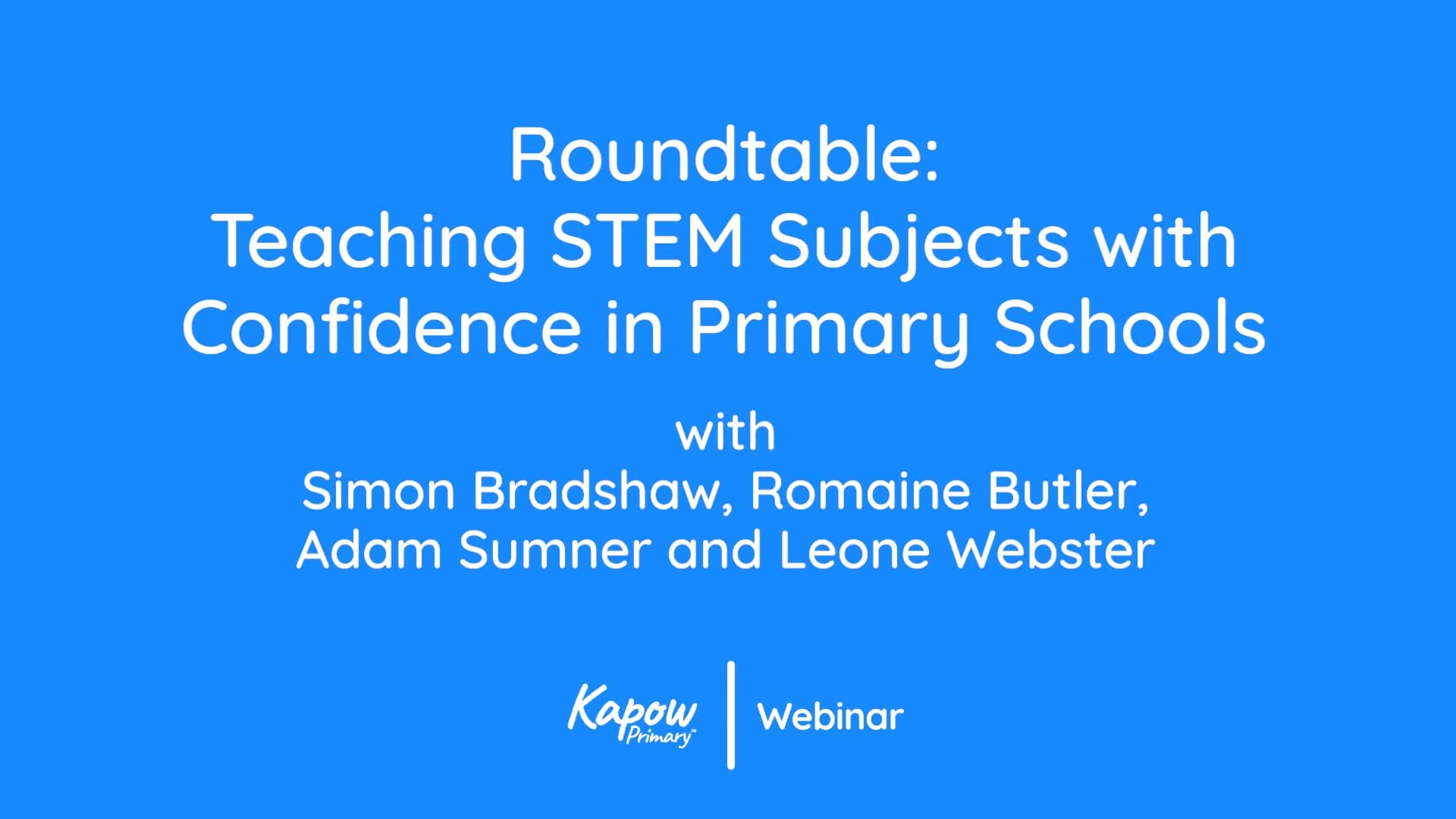This Religion and Worldviews video introduces teachers to the skills needed to help pupils understand and explore the Easter story in Christian teachings. It explores the key elements of the story, including the life and teachings of Jesus, his death and the significance of his resurrection. Teachers are guided on how to support pupils in reflecting on themes such as love, forgiveness and hope, as well as the importance of Easter in the Christian faith.
The video simplifies the narrative, breaking down key events such as Jesus’ arrival in Jerusalem, the Last Supper, his crucifixion and the resurrection, ensuring teachers feel confident in explaining these significant events to their pupils. The story emphasises the lessons of kindness, sacrifice and the promise of new life.
This video is part of Kapow Primary’s Religion and Worldviews – Easter series, designed to help teachers deliver engaging lessons on key Christian beliefs and values. It gives educators the tools to help pupils understand the core messages of the Easter story, enhancing their religious education with clarity and empathy.
Religion and Worldviews, Year 3, What can Easter teach about forgiveness?


